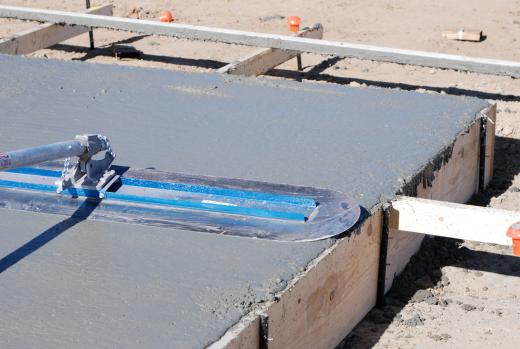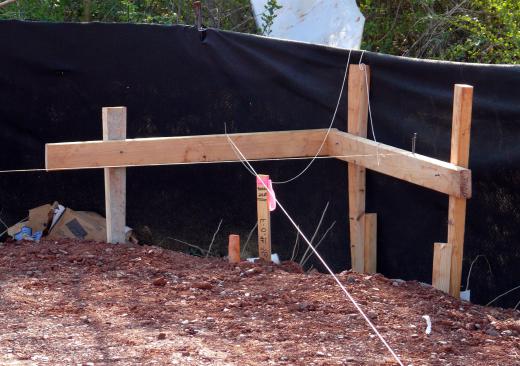A raised foundation is a foundation that, as its name would suggest, is the main floor of a home or business that is raised above the plane of the surrounding earth. Along with the concrete slab foundation, the raised version accounts for most of the foundation options used for homes in most of the world at least the industrialized world. These foundations offer some benefits, but also has some disadvantages.
Many things can be used to raise the foundation above the ground. Concrete blocks or poured concrete forms are often used to raise the foundation. Often around the outside of the home, the outer edges of the support are concrete, brick, or some other solid material. After the pylons are put into place, the next step is to bridge the pylons with another material, usually wood.

Many say that the aesthetics of a raised home are far superior to that of slab homes. In a neighborhood of slab homes, a home with a raised foundation usually stands out and is often a little taller that most of the homes around it. Still, when it comes down to aesthetics, this is more of a personal preference than a true fact.
Despite that, there are some true advantages to homes with a raised foundation. For example, there is less of a need for grading and leveling if a home has such a foundation. Also, in a flood-prone area, there is some additional protection against flooding.
Another benefit of a raised foundation comes when working under the home. Getting to plumbing or other areas under the home is easier with a raised foundation. Also, this type of foundation allows for the opportunity to put in a basement.

However, a number of disadvantages are also associated with a raised foundation. The maintenance required on them is usually more than is required for concrete slab homes. Also, the crawl space underneath the home provides an ideal living space for a number of undesirable animals. While there may be ways to keep such animals out, it may be a constant battle.
It is difficult to say whether a home with a raised foundation is a more difficult task to handle during home construction than building one with a slab foundation. In some ways, this may depend on the location. At a spot with level ground and compacted earth, slab homes may not be very much of a problem at all. Each type of construction presents its own unique opportunities and challenges.
